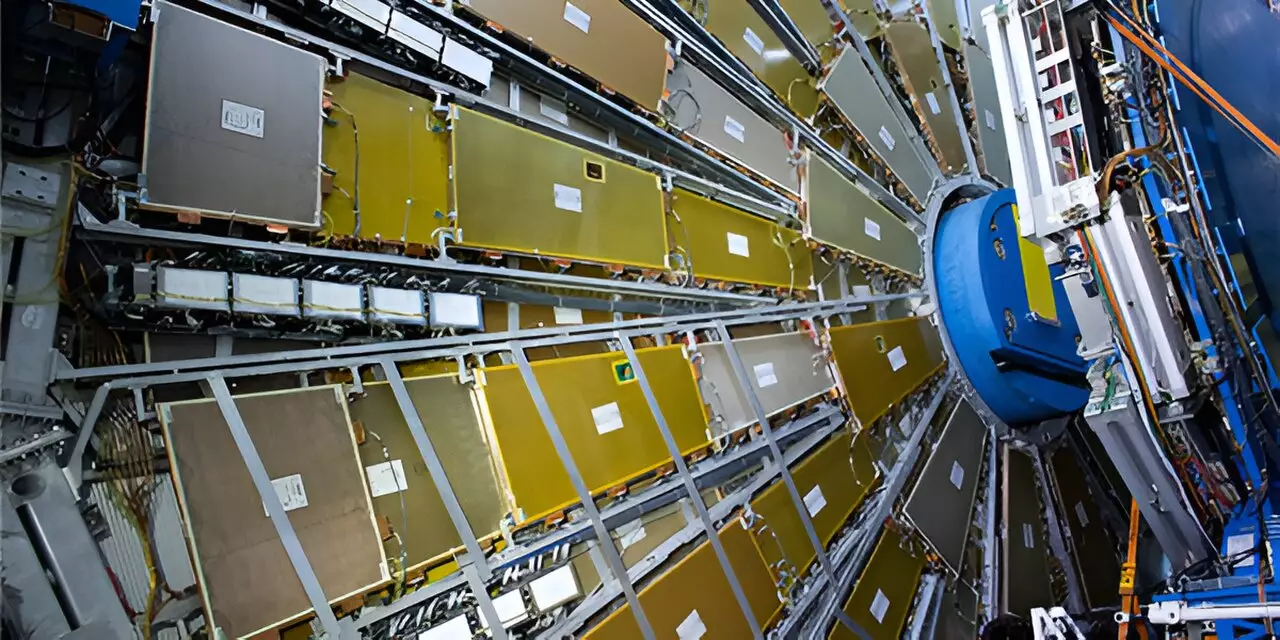The field of particle physics continually evolves as researchers probe deeper into the fundamental building blocks of the universe. Professors Andreas Crivellin from the University of Zurich, and Bruce Mellado, associated with the University of the Witwatersrand and iThemba LABS in South Africa, recently illuminated intriguing anomalies that challenge our understanding of particle interactions. Their findings point towards unexplored dimensions of the existing theoretical framework, particularly the enigmatic presence of new bosons. Anomalies in multi-lepton interactions observed at the Large Hadron Collider (LHC) hint at a potential new Higgs-like boson, which could transform our comprehension of particle mass and force interactions.
At the heart of particle physics lies the Standard Model, a robust mathematical framework that accurately describes the interactions among known fundamental particles. However, it has always been acknowledged that the Standard Model is not the complete picture; it does not account for various cosmic phenomena, leaving scientists with an incomplete understanding of the universe. The discoveries articulated by Crivellin and Mellado echo this sentiment, accentuating the need for a revised understanding of particle interactions.
Multi-Lepton Anomalies: A Portal to New Physics
The multi-lepton anomalies identified by Crivellin and Mellado reveal unexpected behavior in the decay patterns of leptons—an essential component of matter that includes electrons and their heavier counterparts like muons. Traditionally, these decays adhere to the predictions set forth by the Standard Model. However, the excesses of particles such as electrons and muons observed during experimental data call into question the model’s accuracy. As Mellado succinctly puts it, the manifestation of these anomalies could herald the existence of a new Higgs-like boson, potentially arising from the decay of an even heavier boson.
This deviation from expected outcomes is not merely an academic curiosity; it represents a foundational anomaly that could indicate the presence of new forces or mechanisms at play in the universe. Crivellin emphasizes that anomalies serve as crucial indicators of the unknown; they can foreshadow potential breakthroughs and signal moments when established theories must be reevaluated.
The intellectual journey leading to the discovery of the Higgs boson is a narrative of persistence, innovation, and groundbreaking exploration. Initially theorized in 1964, the Higgs boson remained elusive until its discovery at the LHC in 2012, a monumental event that revolutionized particle physics. This discovery not only completed the Standard Model by identifying the last missing fundamental particle but also unveiled the mechanism through which particles acquire mass. Such revelations have substantial implications for understanding dark matter, energy, and other unknown aspects of the universe.
The significance of the Higgs boson goes beyond its fundamental role in particle physics. The 2013 Nobel Prize in Physics awarded to Francois Englert and Peter Higgs served as a testament to the rigorous pursuit of knowledge in the scientific community. Their work has paved the way for subsequent inquiries into the gaps within the Standard Model, with Crivellin and Mellado’s findings providing a rich tapestry of additional questions to explore.
Anomalies in particle physics have historically led to major breakthroughs. For instance, the discovery of the Higgs boson itself was preceded by subtle deviations from existing predictive models, suggesting that our understanding of particle interactions was poised for a significant shift. According to Crivellin, these deviations signal a possible gateway to uncharted territory in particle physics, paving the way for potential discoveries of new bosons and forces that could alter our conception of the universe.
The impetus for this research was initiated during the International Workshop Discovery Physics at the LHC held in December 2014. This collaboration, bolstered by the contributions of scholars such as Professor Alan Cornell and Dr. Mukesh Kumar, encapsulates the collective efforts that lead to profound advancements in the field.
A Tribute to Pioneers in Science
Crivellin and Mellado’s work stands as a touching homage to the late Professor Daniel Adams, a stalwart figure in South Africa’s participation in global particle physics endeavors. His contributions to the SA-CERN program and his dedication to fostering advancements in science helped pave the way for current and future generations of physicists.
As we delve deeper into the anomalies presented by Crivellin and Mellado, it becomes clear that the pursuit of knowledge within particle physics is at a precipice. The implications of these findings may not only redefine existing theories but also ignite a renaissance in our understanding of the universe. Embracing these anomalies could ultimately lead to groundbreaking discoveries that enhance our grasp of fundamental physics and the very fabric of reality itself.


Leave a Reply